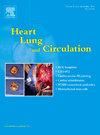Established and Emerging Therapies for Cardiovascular-Kidney-Metabolic Syndrome: Harnessing the Benefits of SGLT-2 Inhibitors, GLP-1 Receptor Agonists, and Beyond
IF 2.2
4区 医学
Q2 CARDIAC & CARDIOVASCULAR SYSTEMS
引用次数: 0
Abstract
Cardiovascular-kidney-metabolic (CKM) syndrome is a term that is increasingly used to describe interconnected conditions that lead to poor health outcomes, including cardiovascular disease, chronic kidney disease, type 2 diabetes, and obesity. Historically, there have been very few targeted pharmacotherapies available that have changed cardiovascular outcomes for people with CKM syndromes; however, over the past decade, new pharmacologic options have rapidly expanded, with strong evidence for cardiovascular and kidney protective benefits in CKM conditions. Of note, sodium-glucose cotransporter-2 inhibitors and glucagon-like peptide-1 receptor agonists have emerged as key therapeutic options and are now widely guideline-endorsed. However, amid a growing pipeline of therapeutic classes on the horizon, real-world use of these agents has become increasingly complex. This review will compare the efficacy of these therapies, exploring their distinct and complementary mechanisms, with consideration to their role in contemporary clinical care. Emerging classes of therapy that may confer additional benefits for people with CKM syndrome will also be highlighted.
心血管-肾-代谢综合征的既定和新兴疗法:利用SGLT-2抑制剂,GLP-1受体激动剂等的益处。
心血管-肾脏代谢综合征(CKM)是一个越来越多地被用来描述导致不良健康结果的相互关联的疾病的术语,包括心血管疾病、慢性肾脏疾病、2型糖尿病和肥胖。从历史上看,很少有靶向药物治疗可以改变CKM综合征患者的心血管结局;然而,在过去的十年中,新的药物选择迅速扩大,有力的证据表明,在CKM条件下,心血管和肾脏的保护作用。值得注意的是,钠-葡萄糖共转运蛋白-2抑制剂和胰高血糖素样肽-1受体激动剂已成为关键的治疗选择,目前已得到广泛的指南认可。然而,随着越来越多的治疗类药物的出现,这些药物在现实世界中的使用变得越来越复杂。本综述将比较这些疗法的疗效,探讨其独特和互补的机制,并考虑其在当代临床护理中的作用。还将重点介绍可能给CKM综合征患者带来额外益处的新疗法。
本文章由计算机程序翻译,如有差异,请以英文原文为准。
求助全文
约1分钟内获得全文
求助全文
来源期刊

Heart, Lung and Circulation
CARDIAC & CARDIOVASCULAR SYSTEMS-
CiteScore
4.50
自引率
3.80%
发文量
912
审稿时长
11.9 weeks
期刊介绍:
Heart, Lung and Circulation publishes articles integrating clinical and research activities in the fields of basic cardiovascular science, clinical cardiology and cardiac surgery, with a focus on emerging issues in cardiovascular disease. The journal promotes multidisciplinary dialogue between cardiologists, cardiothoracic surgeons, cardio-pulmonary physicians and cardiovascular scientists.
 求助内容:
求助内容: 应助结果提醒方式:
应助结果提醒方式:


